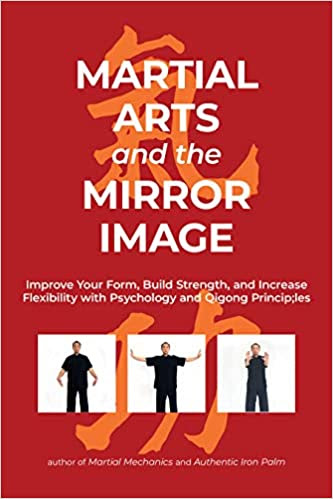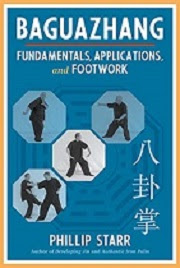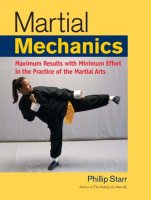By Phillip Starr
Currently, there are a number of kung-fu teachers from the People's Republic of China (or who allege that they trained there) providing interesting and rather expensive seminars throughout the West. In fact, some of them will actually certify Westerners as instructors if they attend enough seminars over a period of time. In my view, this is something akin to becoming a neurosurgeon by attending several seminars. It simply can't be done. I believe that a martial arts system can be learned only through regular, hands-on training and by “regular”, I mean attending a class at least two or three times weekly. Yes, you can learn some valuable material at seminars and I'm very much in favor of them but I don't believe that it is possible to learn an entire system that way.
Some time ago, one of my students told me that he'd met an older Chinese gentleman who had moved to the West from mainland China. He was highly skilled in a particular martial art and allegedly possessed a very high level of fighting skill. Really? I told my student to look at China's recent history and then do the math... Let's have a look.
Dynasty, there were numerous martial arts groups throughout China. However, at the beginning of the 20th century the government collapsed and the country was in turmoil. Warlords vied for power with one of them finally becoming the leader; his name was Jiang Jieshi (we know him as Chiang Kai-shek). But he was at odds with a youngster named Mao Zedong and they locked horns.
It was during this time of political upheaval that Japan attacked China. This occurred in 1937. The Japanese poured into China, ravaging the country and bombing the larger cities. Not much of a time for managing a martial arts school... At the end of the war, Mao and Jiang went back to butting heads and Mao's forces eventually drove Jiang and his followers off the mainland and onto the island of Formosa (now known as Taiwan). The communists established the People's Republic of China in October of 1949.
One of the first things the new government did was to forbid the practice of any and all martial arts. After all, kung-fu practitioners had been at the head of the anti-Qing forces and the new government didn't want a replay; they didn't want anti-government underground groups to come together as they had during the last dynasty. All martial arts schools shut down and teachers were forbidden to teach the martial ways.
Yes, I see the guy in the back waving his hand. You say that martial arts teachers could have continued to teach inside their homes, away from the prying eyes of the government during this time? Not likely. You see, China had, and still has, the best internal intelligence system in the world. For many years after the establishment of the new government, everyone was required to attend regularly scheduled classes and meetings in which the many benefits and superiority of communism were espoused. These meetings were broken down into small groups, which were divided into smaller groups, and those were further divided into even smaller groups... until there groups of only 3 people. Believe me, if you were doing something that was regarded as illegal, the authorities would find out about it post haste! So, no, teachers didn't dare teach students behind closed doors. In China, every wall has many ears (this is still true today) and at that time, it simply wasn't possible to keep an activity such as martial arts instruction hidden.
Then things got worse. The Cultural Revolution began in 1965 and lasted for ten years. During this time, all educational institutions were shut down and anyone who was representative of the “old China” - which, of course, included martial arts teachers – was severely punished. Many were “re-educated” (I'll leave that to your imaginations). The bottom line is that martial arts practice was still strictly forbidden and anyone caught teaching or even practicing such things was putting his life on the line.
After the end of the Cultural Revolution, China's leaders began to realize what treasures China really possessed; traditional Chinese medicine, martial arts, traditional dancing, and so on. The development of contemporary wushu (a combination of gymnastics, martial arts, and Chinese opera) went into high gear while various forms of taijiquan were modified so that older people could practice them without having to over-tax their bodies. However, to teach wushu, it was necessary to be a college graduate and the majority of traditional martial arts teachers didn't meet that requirement. They were free to teach in the public parks just as they still do today.
However, they were restricted to teaching technique and forms only. Two-person routines or any form of sparring was not allowed. The authorities claimed that they were concerned about people being injured through such training but I suspect that they were also concerned about people learning how to apply traditional martial arts. So they permitted people to practice “sanda”, which is very similar to kickboxing with some grappling thrown in.
Regardless of what style you'd learned – praying mantis, xingyiquan, or anything else, your fighting practice was limited to sanda. Thus, everyone, regardless of style, fought in the same way... so “styles”, in so far as fighting was and is concerned, simply vanished. While it was possible to learn forms and exercise routines, one could not practice applications at anything close to full speed and sparring of any kind was out of the question.
As far as practical experience goes... well, that's another can of worms. The Chinese law enforcement authorities take a very dim view of any kind of violence and what we'd call a simple street fight are extremely rare. Extremely. Rare.
Now, if someone says that his teacher from mainland China is, say, in his 50's, well....I'll let you do the math. What was happening in China when he was in his teens or a bit later and allegedly learning a traditional martial art? If he's 50, he was born in 1970 (during the Cultural Revolution) and by the time he was old enough to begin serious training, he'd be learning the “shells” of forms in a local park with no fighting experience whatsoever.
Let me take this opportunity to make a bunch of new friends by saying that I believe a good number of these teachers are simply exploiting their own ethnicity; they're Chinese, so they HAVE to know what they're doing, right? Yeah. I remember my high school years when we believed that any student who was even half-Japanese HAD to know judo and karate. I know of one Chinese school teacher in Iowa who claimed to be a master of what he called “Calligraphic Kung-Fu.” His students learn to draw Chinese characters in the air with their hands and he shows them how these movements can be turned into lethal blows. You. Betcha. BUT, he once had a very large following and last I knew, he was still at it!
Then there are those who claim to be Taoists who live in a monastery or some such abode in the cloudy mists atop some sacred mountain. Let me tell you, for all the cute photos they show everyone, there are no Taoist monasteries with adepts practicing exotic forms of qigong and martial arts all day. Not in modern China. The same is true for Buddhist temples. Yes, there are monks but the government determined that they needed to provide some sort of service to the state. They allow them to live in the temples (or nearby) and practice their faith BUT in return, they must help serve the tourists who visit the temples. Shao-lin Temple is a fine example. For all the bruhaha about it, what is being taught there is NOT a form of traditional shaolinquan; it is contemporary wushu. The “monks” aren't really Buddhist monks at all. For that matter, most of them know little of Buddhism but they shave their heads, wear the saffron robes, and thrill visitors with their demonstrations. For those who wish to learn authentic shaolinquan, don't go to China. It isn't there anymore. It moved to the West.
So next time you hear of some famous kung-fu master teaching a seminar (especially if it's at a high price), find out how old he is and do some simple math. You might surprise yourself.


.jpg)
.jpg)













.jpg)


.jpg)










.jpg)




































